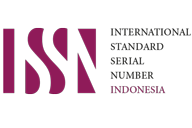Implementasi Kebijakan Larangan Iklan Rokok Di Kota Bogor Sebagai Upaya Melindungi Generasi Muda Dari Bahaya Merokok Tahun 2023
Keywords:
Iklan Rokok, Implementasi, KebijakanAbstract
According to data from The Tobacco Atlas in 2019, Indonesia has the third highest smoking population in the world after China and India, at 61.5 million smokers, or 22% of the total population in Indonesia. The prevalence of smoking among young people in Indonesia aged 10–18 years has increased from 7.2% in 2013 to 9.1% in 2018. Cigarette advertisements are promotional media that can encourage target consumers to smoke, especially adolescents. Bogor City is one of the cities that has implemented a ban on cigarette advertisements in its area. The purpose of this study is to determine the implementation of Bogor Mayor Regulation Number 3 of 2014 concerning the prohibition of cigarette product billboards in Bogor City. The theory used in this research is the George C. Edward III theory, and this type of research uses a descriptive-qualitative method. The research data sources are primary and secondary data obtained through observation, interviews (12 sources), document review, and documentation. The results showed that the implementation of the cigarette advertising ban policy in Bogor City was still not implemented optimally. This was because communication had not been carried out properly by policy implementers in carrying out this mayoral regulation. Staff resources still lack personnel in their fields. Bureaucratic appointments experience obstacles because the implementers of this policy are not directly selected by superiors but through BKSDM, and the incentives of the implementers do not come from basic salaries and allowances while working. Policy implementers are expected to further optimise the socialisation process for policy targets and immediately submit to BKSDM regarding additional personnel
References
Daniswari, S. (2020). Pelaksanaan Peraturan Walikota Pekanbaru Nomor 39 Tahun 2014 Tentang Kawasan Tanpa Rokok Terhadap Pelarangan Iklan Rokok Di Kota Pekanbaru. Universitas Islam Negeri Sultan Syarif Kasim Riau-Pekanbaru.
Dinas kesehatan Kota Bogor. (2021). Upaya Kota Bogor Dalam Menerapkan Kebijakan Larangan Memajang Iklan / Sponsor / Promosi Produk Rokok di 9 Kawasan Tanpa Rokok (KTR).
Haryoko, S., Bahatiar, & Arwadi, F. (2020). Analisa Data Penelitian Kualitatif (Konsep, Teknik dan Prosedur Analisis) (1 ed.). Makassar: Badan Penerbit UNM. Diambil dari http://eprints.unm.ac.id/20838/
Hasanah, R., Gayatri, R. W., & Ratih, S. P. (2021). Pengaruh Iklan terhadap Perilaku Merokok Siswa: Literature Review. Sport Science and Health, 3(10), 757–760. https://doi.org/10.17977/um062v3i102021p757-760
Hidayat, muhammad rahman. (2017). Efektivitas Implementasi Peraturan. Ejournal Ilmu Pemerintahan, 5(1), 405–418. Diambil dari ejournal.ip.fisip-unmul.ac.id
Kementrian Kesehatan RI. (2018). Laporan Riskesdas 2018 Kementrian Kesehatan Republik Indonesia. Laporan Nasional Riskesdas 2018. Jakarta: Badan Penelitian dan Pengembangan Kesehatan.
Kota Bogor. (2015). Peraturan Daerah Kota Bogor Nomor 1 Tahun 2015 Tentang Penyelenggaraan Reklame. Bogor: Sekretaris Daerah Kota Bogor.
Martini, S. (2020). Global burden of 87 risk factors in 204 countries and territories, 1990–2019: a systematic analysis for the Global Burden of Disease Study 2019. The Lancet, 396(10258), 1223-1249. https://doi.org/10.1016/S0140-6736(20)30752-2
Munandar, A. (2020). Efektiftitas Kebijakan Gambar Bahaya Merokok Dalam Mengurangi Perokok di Kalangan Nelayan Kelurahan Pasie Nan Tigo. Ranah Research: Journal of Multidicsiplinary Research and Development, 2(2), 144. Diambil dari https://jurnal.ranahresearch.com/index.php/R2J/article/view/250%0Ahttps://jurnal.ranahresearch.com/index.php/R2J/article/download/250/230
Nurdin, E. S. (2019). Teori-Teori Analisis Implementasi Kebijakan Publik. Maulana Media Grafika. Bandung: Maulana Media Grafika.
Noviafni, F. B., & Khaidir, A. (2019). Implementasi Peraturan no. 24 Tahun 2012 tentang Kawasan Tanpa Rokok dalam Upaya Penciptaan Kota Padang sebagai Kota Layak Anak. Ranah Research: Journal of Multicslinary Research and Development, 1(3), 453–463. Diambil dari https://jurnal.ranahresearch.com/index.php/R2J/article/view/77
Pemerintah Indonesia. (2012). Peraturan Pemerintah Republik Indonesia Nomor 109 Tahun 2012 Tentang Pengamanan Bahan Yang Mengandung Zat Adiktif Berupa Produk Tembakau Bagi Kesehatan. Jakarta: Menteri Hukum Dan Hak Asasi Manusia Republik Indonesia.
Presiden Republik Indonesia. (2020). Rencana Pembangunan Jangka Menengah Nasional 2020-2024. Jakarta: Sekretariat Kabinet Republik Indonesia.
Putra, H. S., Rosemary, R., Yanuar, D., & Ahsan, A. (2020). Pengaruh Iklan Rokok Terhadap Perilaku Merokok Siswa Di Kota Banda Aceh , Indonesia. Jurnal Komunikasi, 36(2), 348–363.
Qudsiah, A. (2023). Implementasi Kebijakan Larangan Penjualan Rokok Pada Anak Dibawah Umur Di Kota Bekasi. Uin Syarif Hidayatullah Jakarta.
Saragih, leo N. (2013). Implementasi Peraturan Daerah Kota Medan Nomor 11 Tahun 2011 Tentang Pajak Reklame.
Sugiyono. (2018). Metode Penelitian Kuantitatif, Kualitatif, dan Tindakan. Bandung: ALFABETA.
Veruswati, M., Asyary, A., Nadjib, M., & Achadi, A. (2018). Current activities in smokes-free zone policy: A tobacco control care reviews in Indonesia. Family Medicine and Primary Care Review, 20(4), 385–388. https://doi.org/10.5114/fmpcr.2018.79352
Walikota Bogor. (2014). Peraturan Walikota Bogor Nomor 3 Tahun 2014 Tentang Larangan Penyelenggaraan Reklame Produk Rokok Di Kota Bogor. Kota Bogor: Sekretaris Daerah Kota Bogor.










